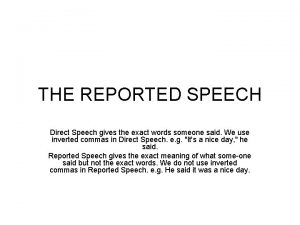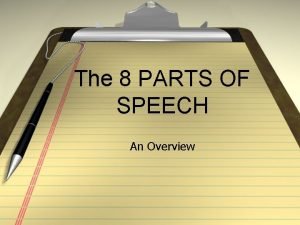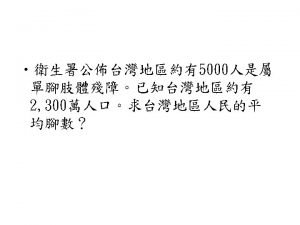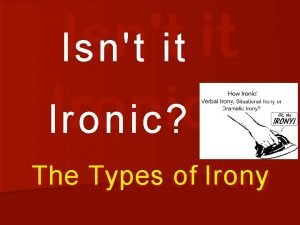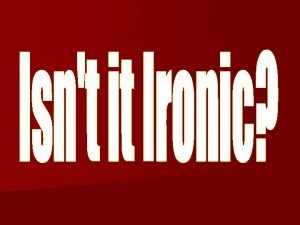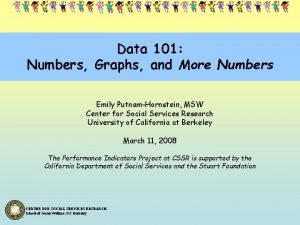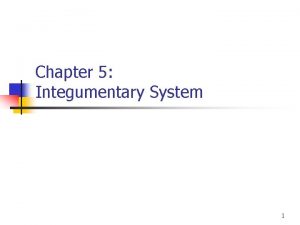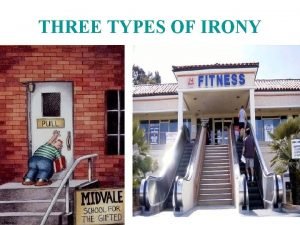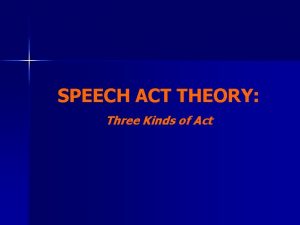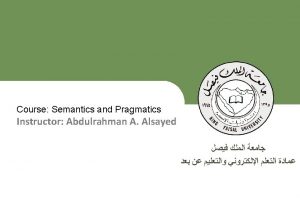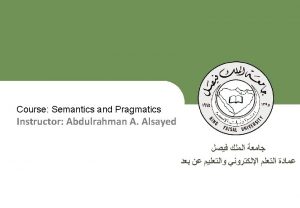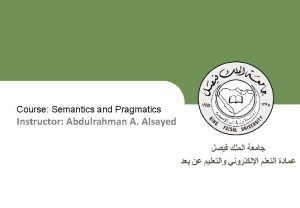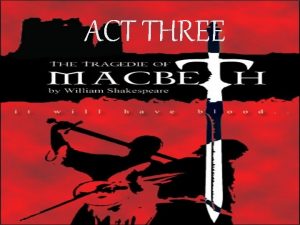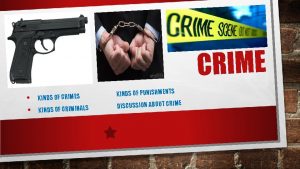SPEECH ACT THEORY Three Kinds of Act Introductory









- Slides: 9

SPEECH ACT THEORY: Three Kinds of Act

Introductory In the 1950 s and 60 s two philosophers of language, John Austin and John Searle, developed speech act theory from their observation that language is used to do things other than just refer to the truth or falseness of particular statements. Austin’s book How to Do Things with Words (1962) is the text of a series of lectures he gave at Harvard University on this topic. John Searle, a student of Austin, further developed Austin’s work in his book Speech Acts which was published in 1969.

Introductory Searle and Austin argued that in the same way that we perform physical acts, such as having a meal or closing a door, we can also perform acts by using language. We can use language, for example, to give orders, to make requests, to give warnings, or to give advice. They called these speech acts (actions performed via utterances). Thus, people do things with words in much the same way as they perform physical actions.

Propositional Content vs Illocutionary Force An important issue that underlies this view of language is the relationship between the literal meaning (propositional content) of an utterance and what it is aiming to do (illocutionary force). Many sentences mean something other than their literal meaning. Propositional content Referring to the temperature Illocutionary force Act as a request for someone to do something, such as close the door It’s cold in here

Propositional Content vs Illocutionary Force A speech act is a sentence or utterance which has both n propositional meaning, and This is the basic literal meaning of the utterance which is conveyed by the particular words and structures which the utterance contains. n illocutionary force. This is the effect the utterance and written text has on the listener or reader. Propositional meaning Statement of fact Illocutionary force An offer to help themselves to something to eat. There’s food in the fridge.

Three Kinds of Act There are three kinds of act which occur with any sentence or utterance: n Locutionary act It refers to the referential or factual meaning of the sentence: that is the literal meaning of the actual words. n Illocutionary act It refers to the speaker’s intention in uttering the words. n Perlocutionary act It refers to the effect the utterance has on the thoughts or actions of the other person. The term speech act is most often used to refer to the second of these, the illocutionary act or force, of an utterance.

Three Kinds of Act Utterance It’s cold in here. There’s food on the stove. Locutionary act Illocutionary act Perlocutionary act Referring to the temperature A request to close the door Someone actually closes the door Referring to the location of the food An offer of something to eat Someone helps himself to the food

Three Kinds of Act n n n It is not always easy to identify the illocutionary force of an utterance. This may depend very much on the social and physical context in which it occurs. Hearers infer the intention of an utterance by considering its form, content, and the context in which it occurs. Individual speech acts can only realistically be determined in relation to a complete text, including what has come before it, and what follows it, rather than by examination of an utterance in isolation (Flowerdew, 1990). Greeting Hello Summon Answer Hello! Hello – anybody home? As someone answers the telephone

Three Kinds of Act It is possible for an utterance to have more than a single illocutionary force. For example: Would you like a drink? might be both a question and an offer when it is replied ‘No thanks’ – treating the utterance as both a question and an offer which they decide not to take up. However, they may reply ‘Yes, I’d love one’ – replying positively to the question as well as accepting the offer. It’s cold in here. might be both a statement of fact, a request for someone to close the window, and a warning to someone to put warmer clothing on or else they might catch a cold.
